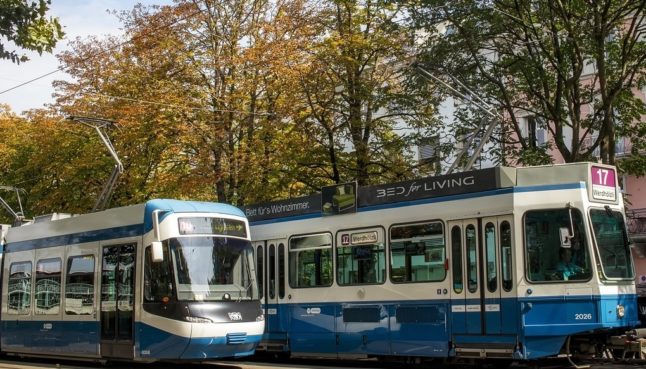Three fatal tram accidents occurred in Zurich in the span of five days in early March.
In one, a pedestrian fell between the tram and the platform at the Oerlikon Ost stop; the victim was taken to a hospital in critical condition and died the next morning.
Next, a cyclist collided with a tram in District 5, succumbing to his injuries the next day.
The same day, another pedestrian fell under a tram at Zurich’s main train station, dying at the scene of the accident.
Though all three events happened in quick succession, accidents involving pedestrians or cyclists colliding with public transport in Zurich are not a new phenomenon.
“In recent years, accidents involving personal injuries have increased steadily,” said city official Michele Romagnolo. “People are crushed by trams and die. We can’t stand idly by.”
What is being done to prevent this type of deaths in the future?
The Zurich Transport Authority (VBZ) and tram manufacturer Alstom are currently testing airbags that inflate when a tram hits a pedestrian.
This mechanism would be triggered by a sensor on the front of the driver’s cab, and is intended to reduce the impact and consequences of a collision between the trams and pedestrians or cyclists.
According to Heinz Schulthess, president of the tram drivers’ association, “in head-on accidents, people first hit their heads on the window and then fall to the ground. An airbag pushes a person away, largely preventing the impact and minimising the risk of death.”
The safety system thought by the Public Transport Company of Zurich, Swizterland.
[📹 albinfo .ch]pic.twitter.com/NHSUhW0Vmv
— Massimo (@Rainmaker1973) April 21, 2024
During this test phase, engineers are also looking into ways to increase the speed of airbag deployment and develop a mechanism for quick folding, so that the tram can resume operation immediately after an incident.
When would this system be deployed?
The trial run is expected to be completed in summer of 2024.
“What happens next depends on the results,” the VBZ spokesperson Leo Herrmann said.
Are any other safety measures under consideration as well?
According to Schulthess, another way to increase tram safety would be to install red LED lights along the tracks on the ground.
They would serve to would warn people crossing the tram tracks while staring at their smartphones.
“The main cause of accidents are pedestrians crossing the street without paying attention,” he said.



 Please whitelist us to continue reading.
Please whitelist us to continue reading.
Member comments